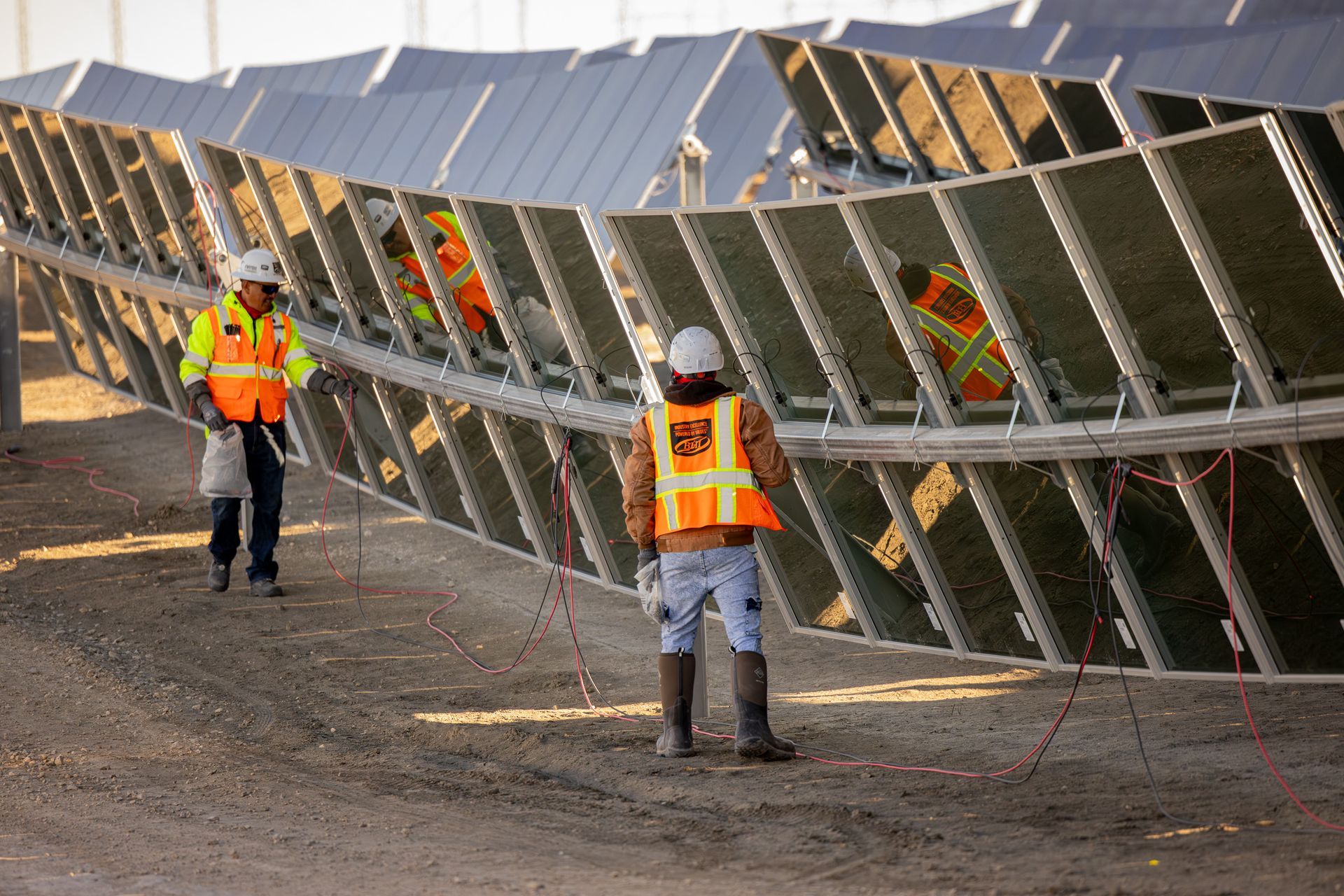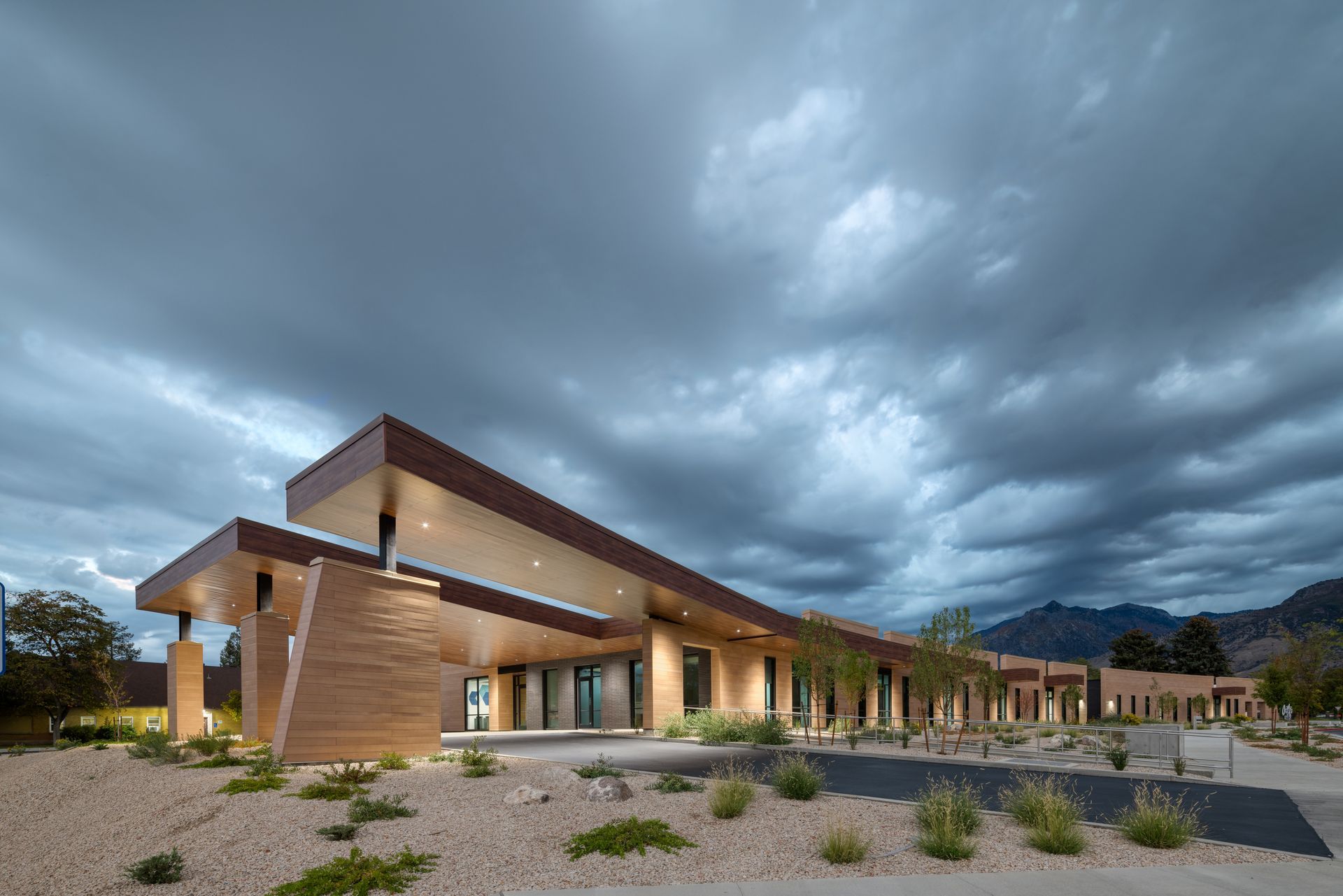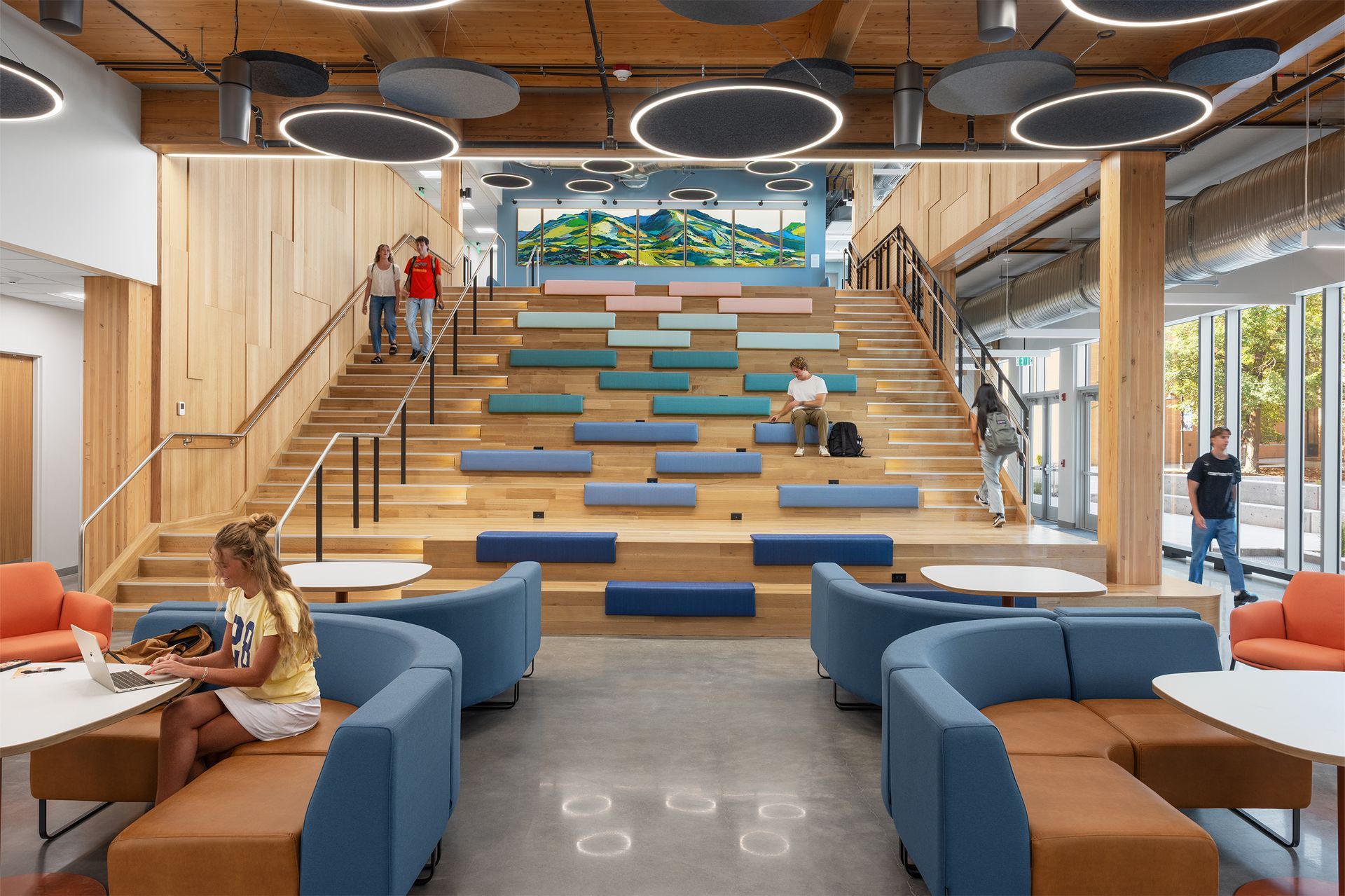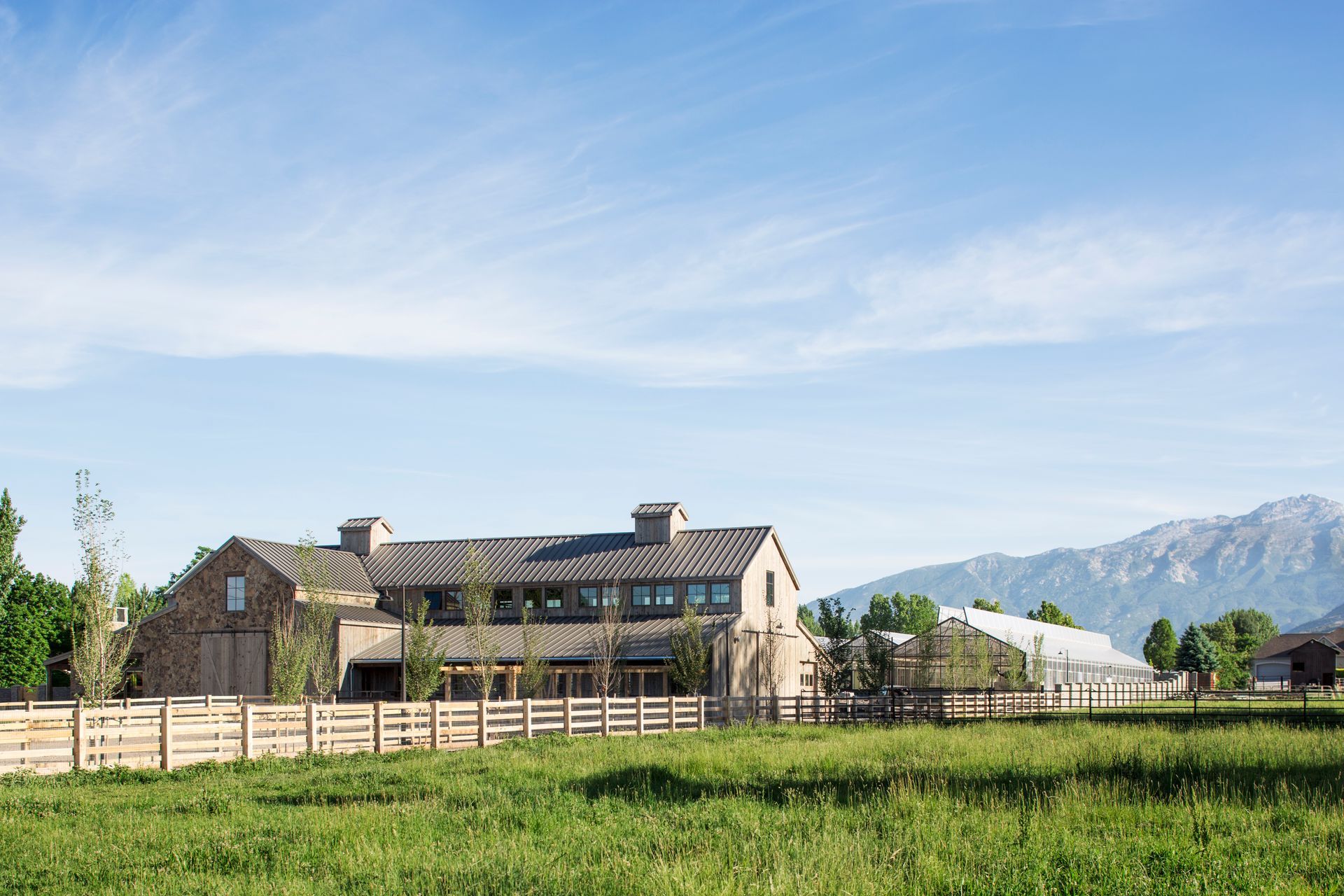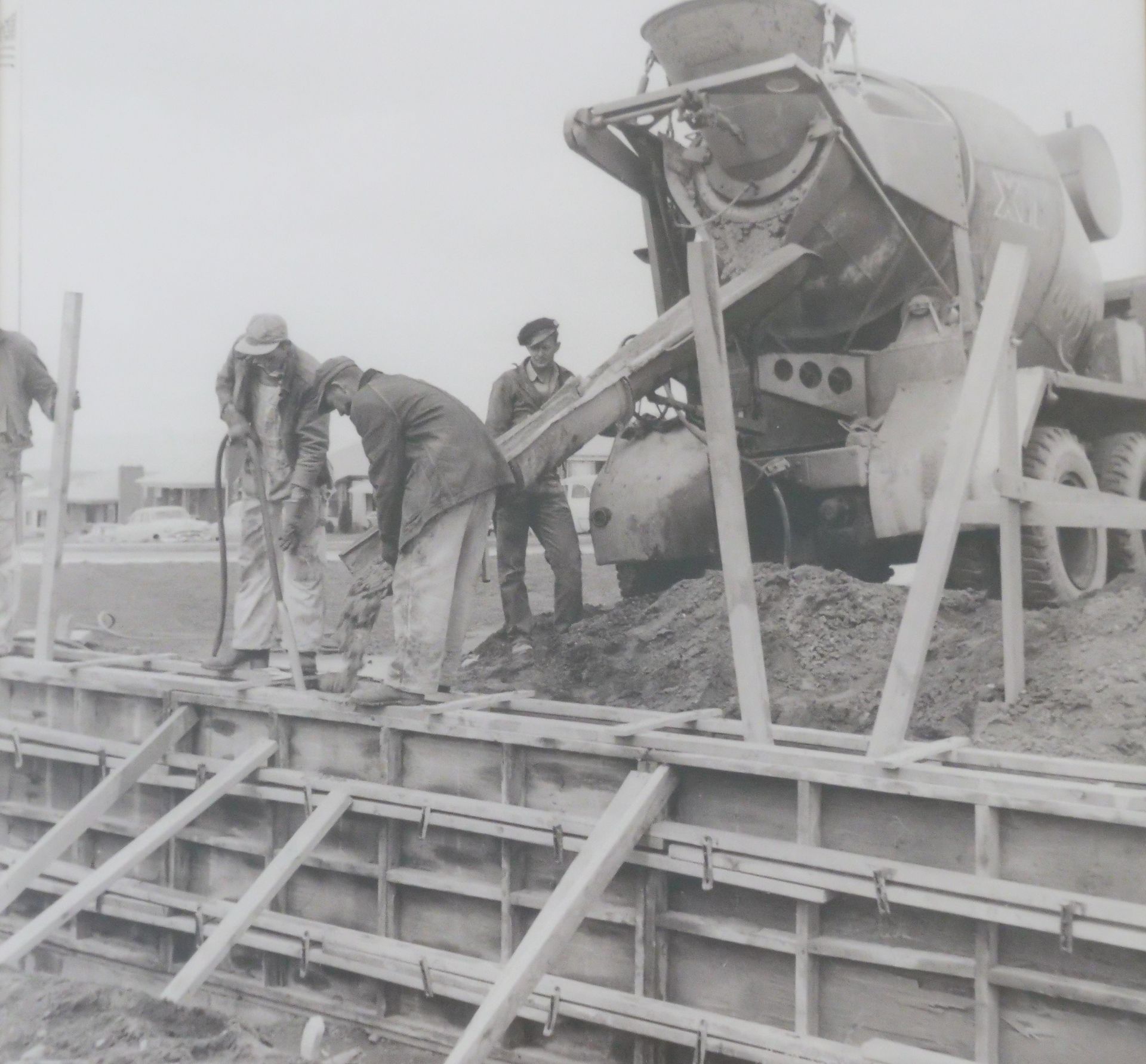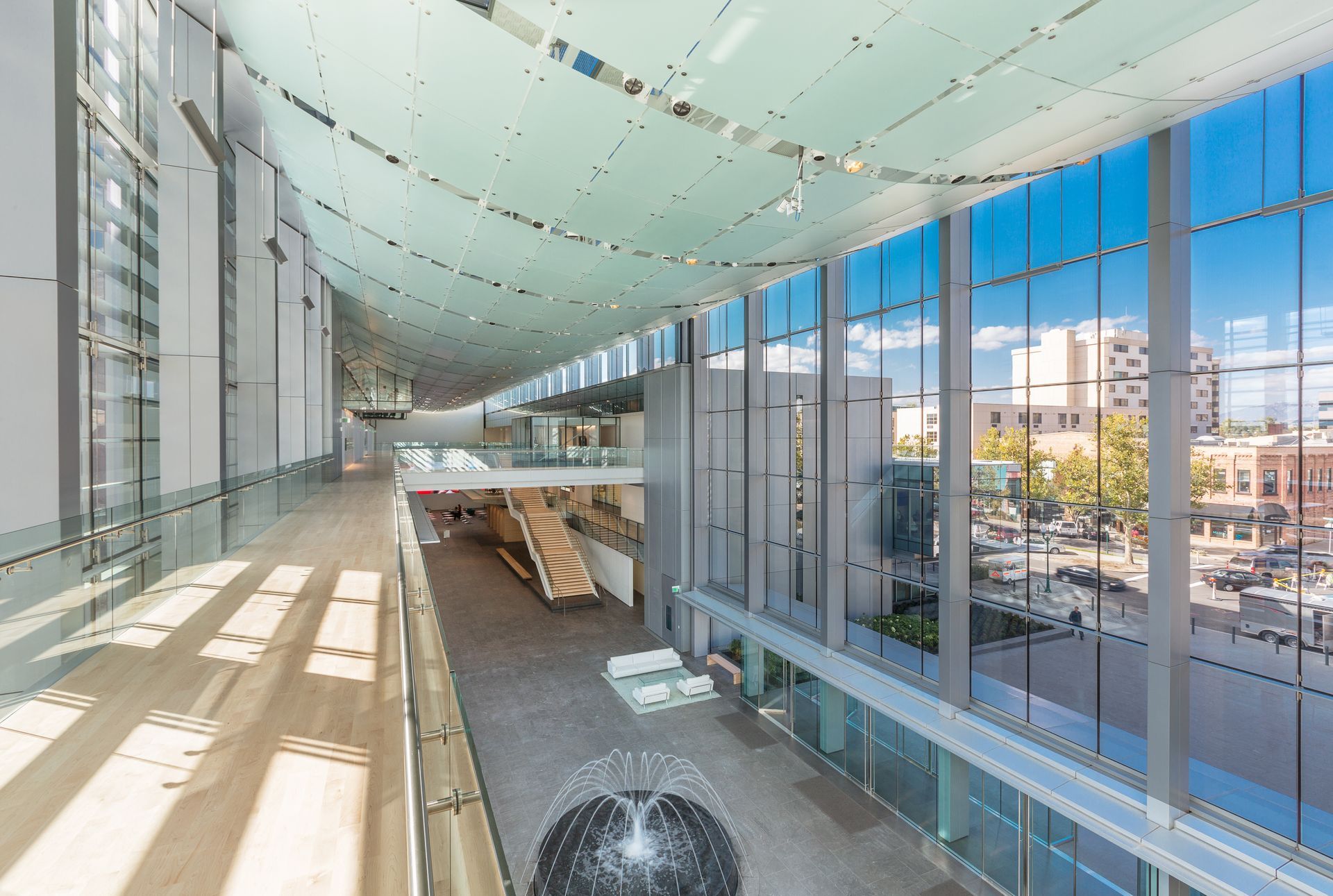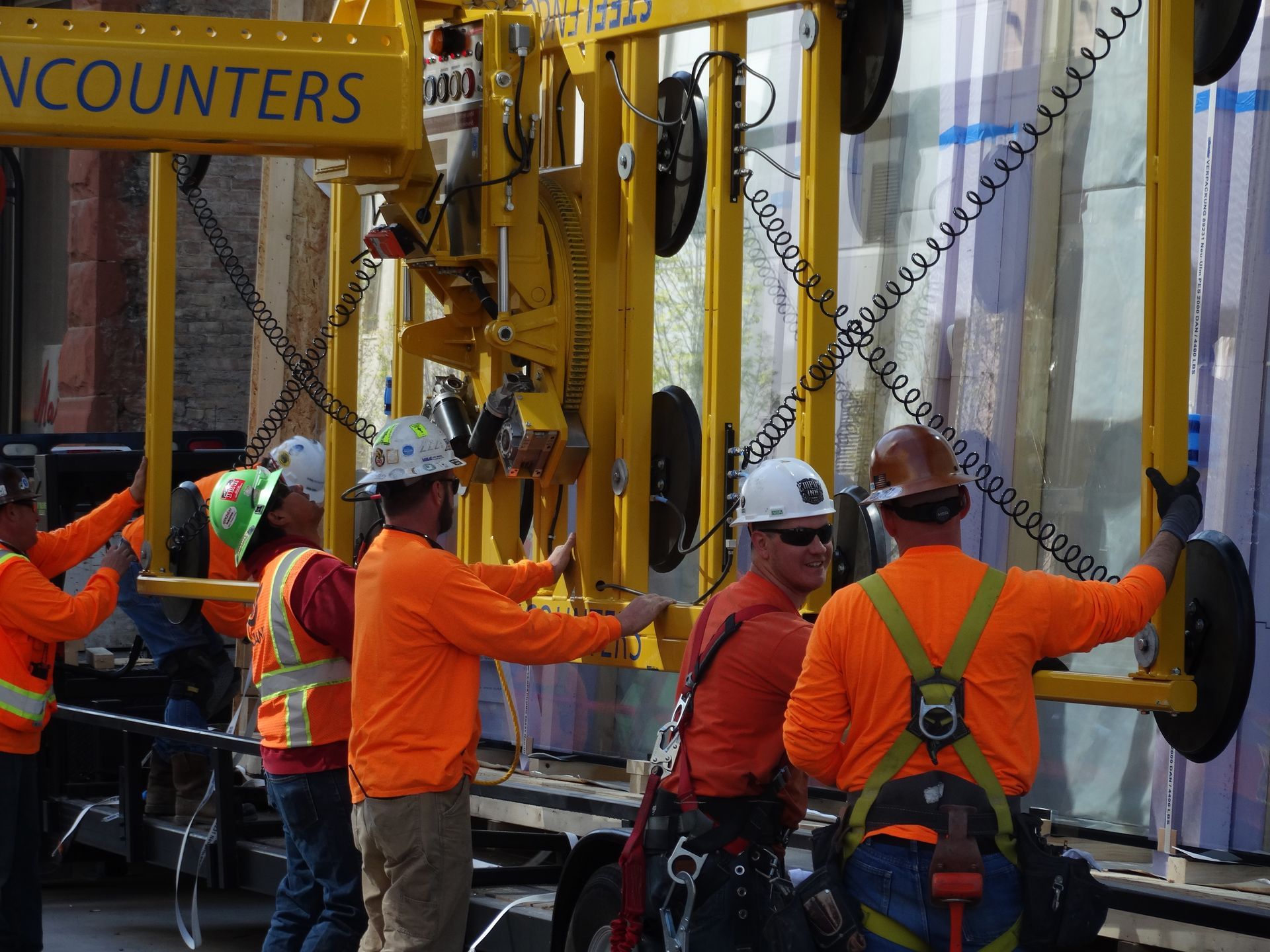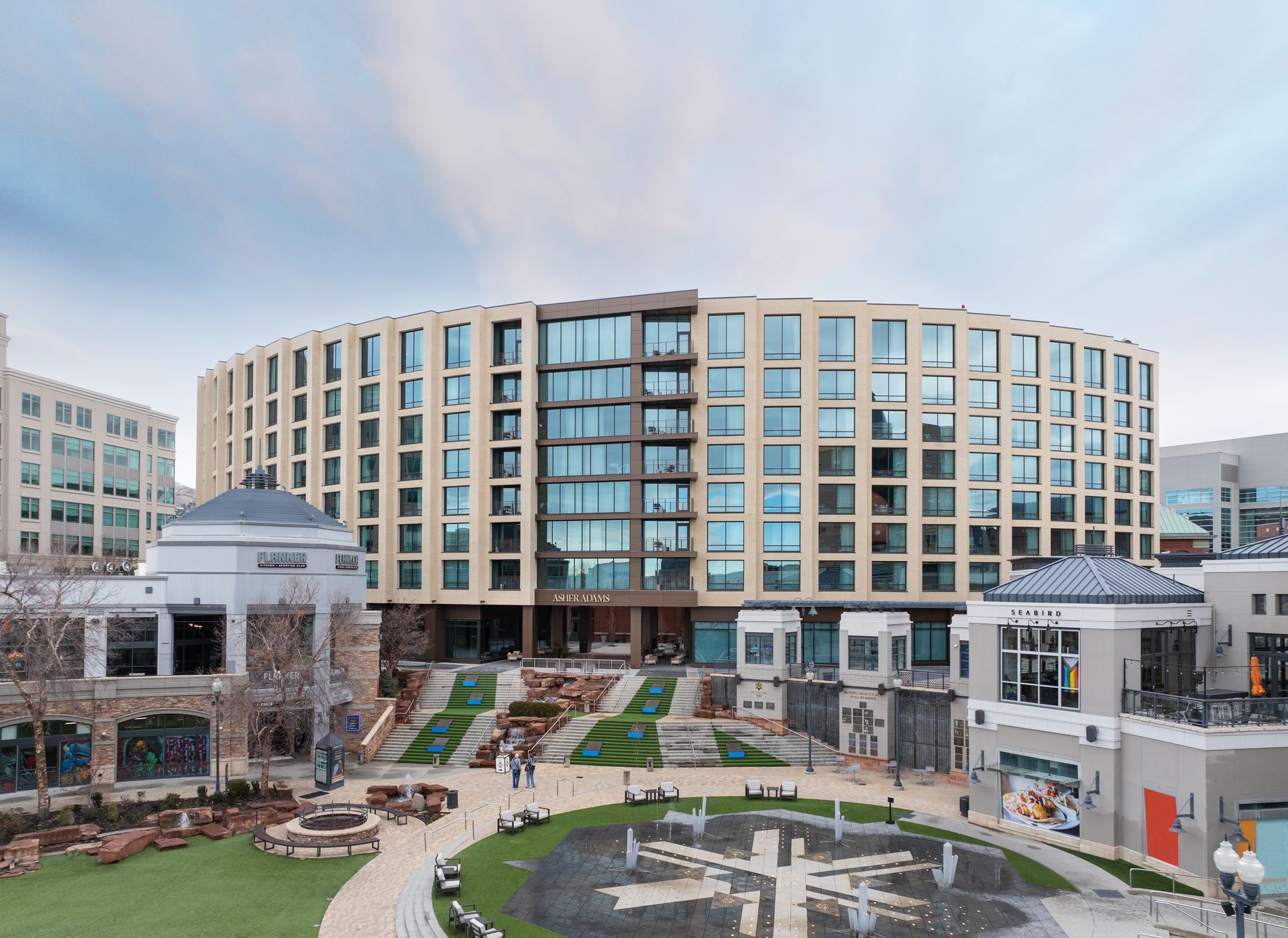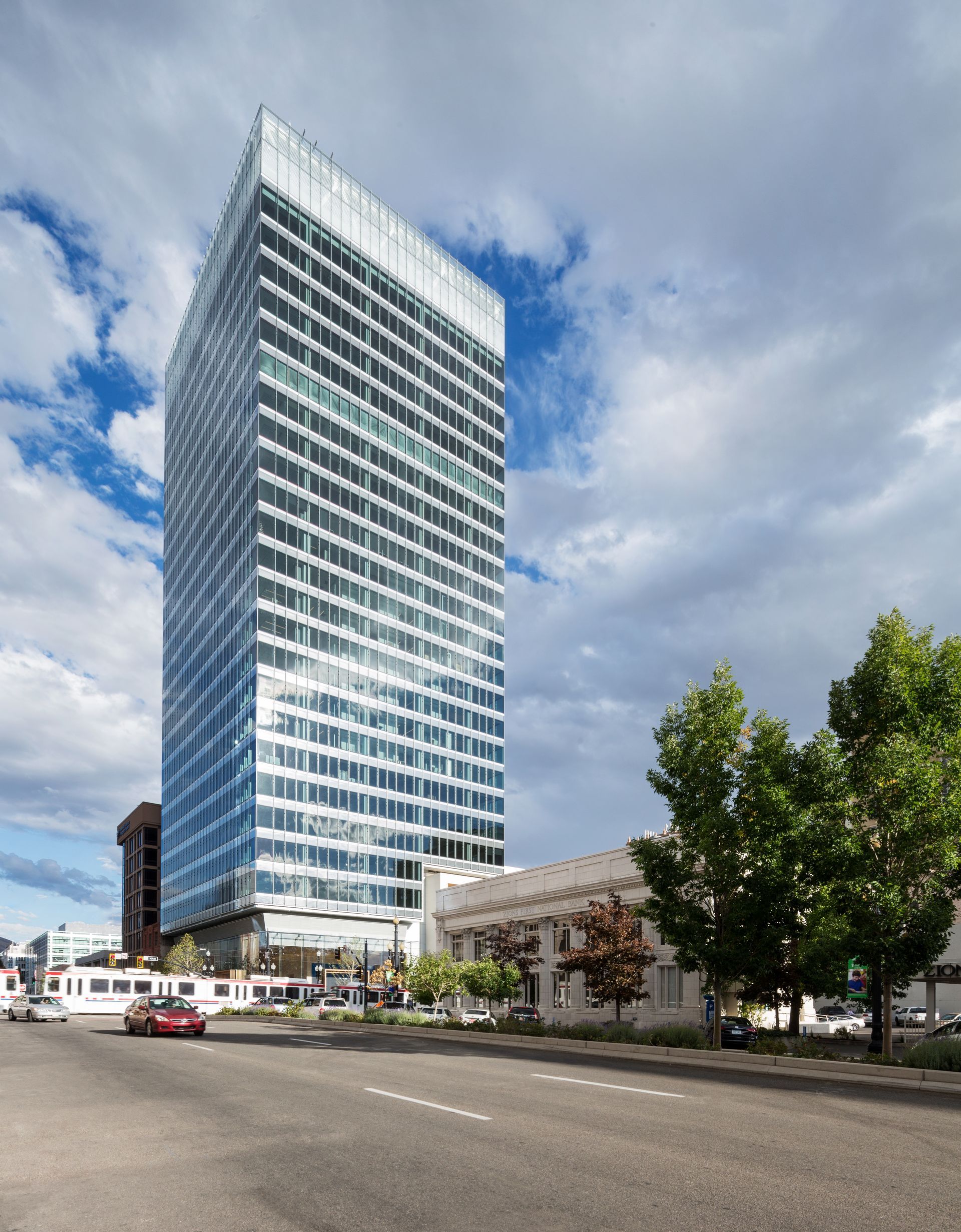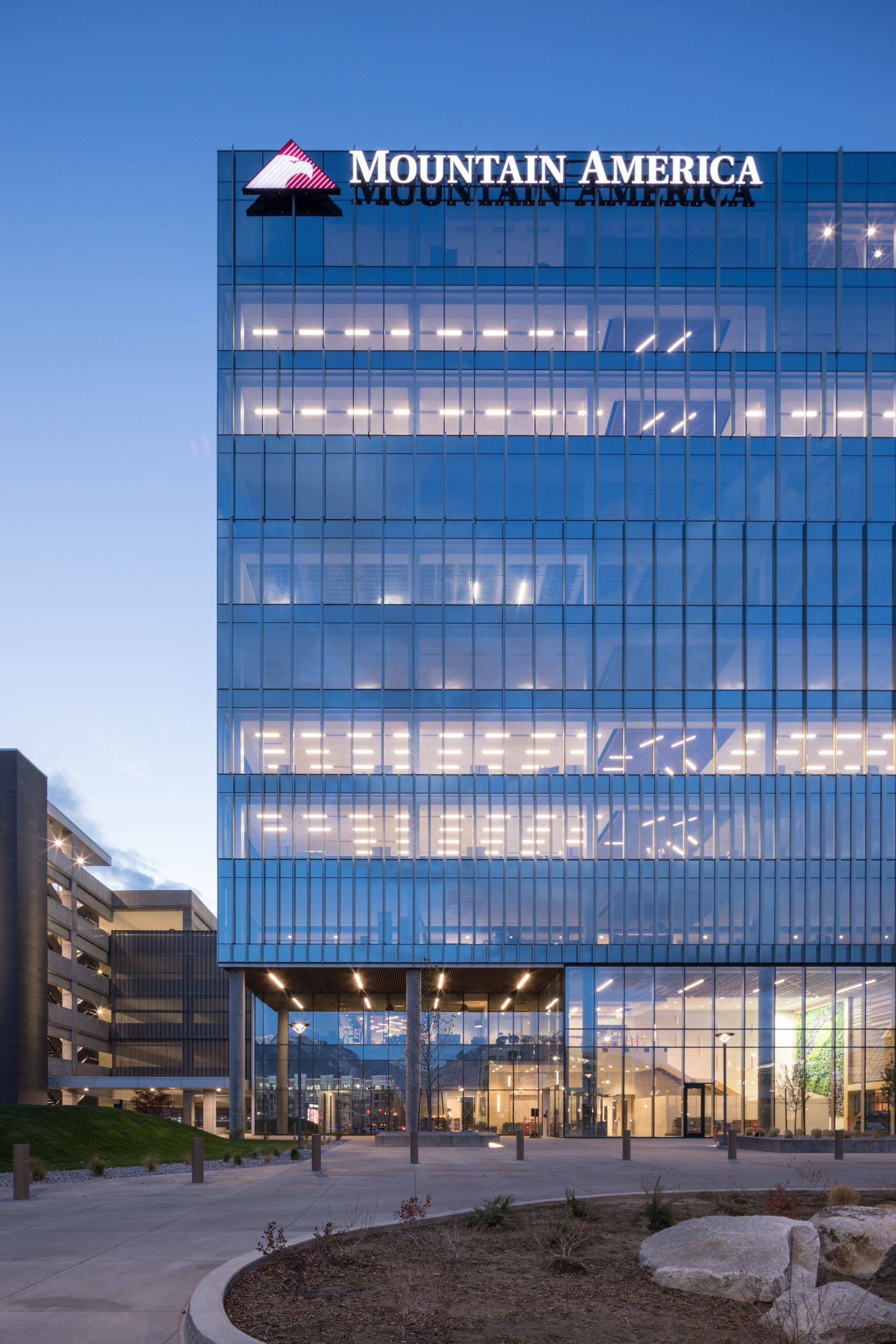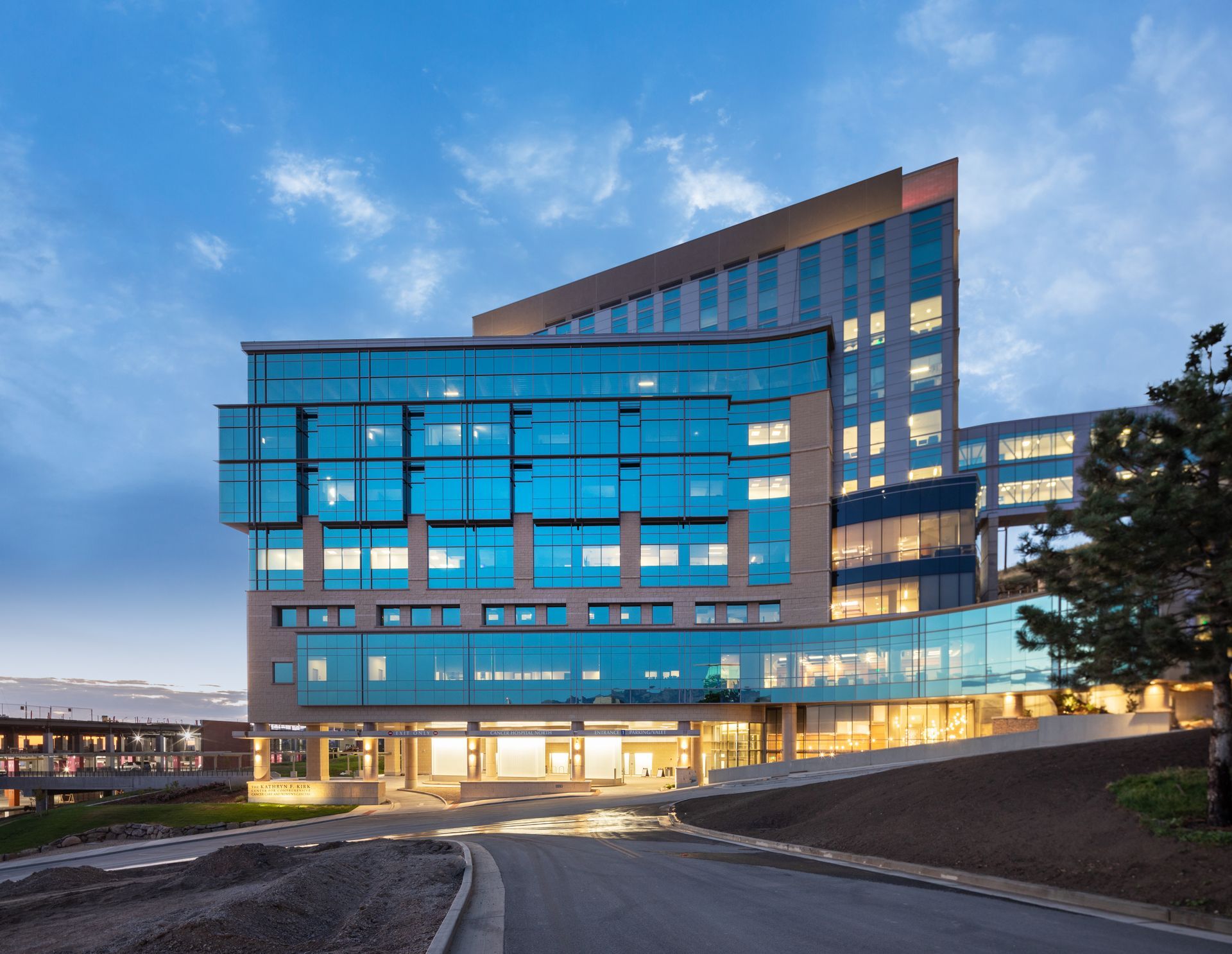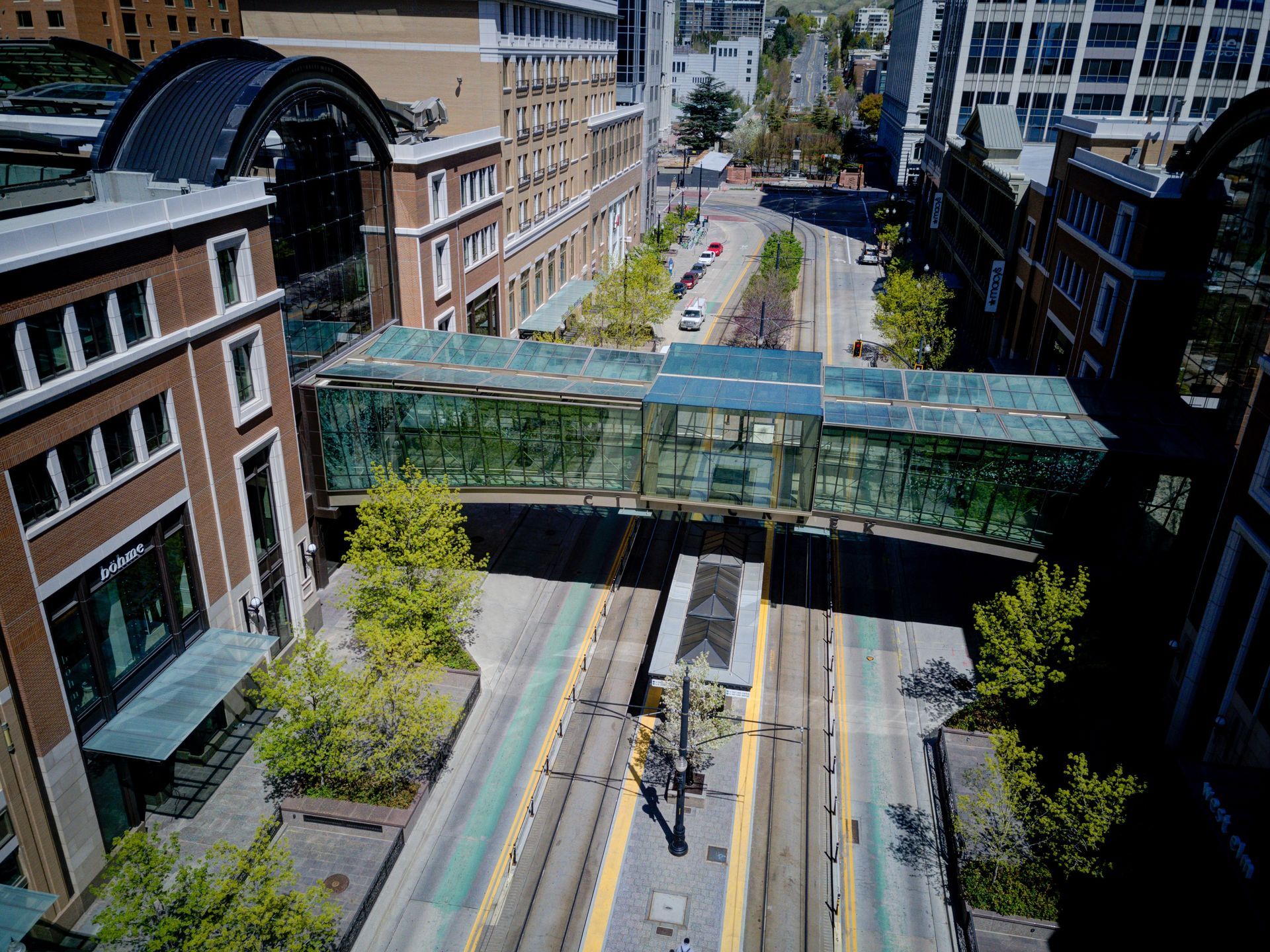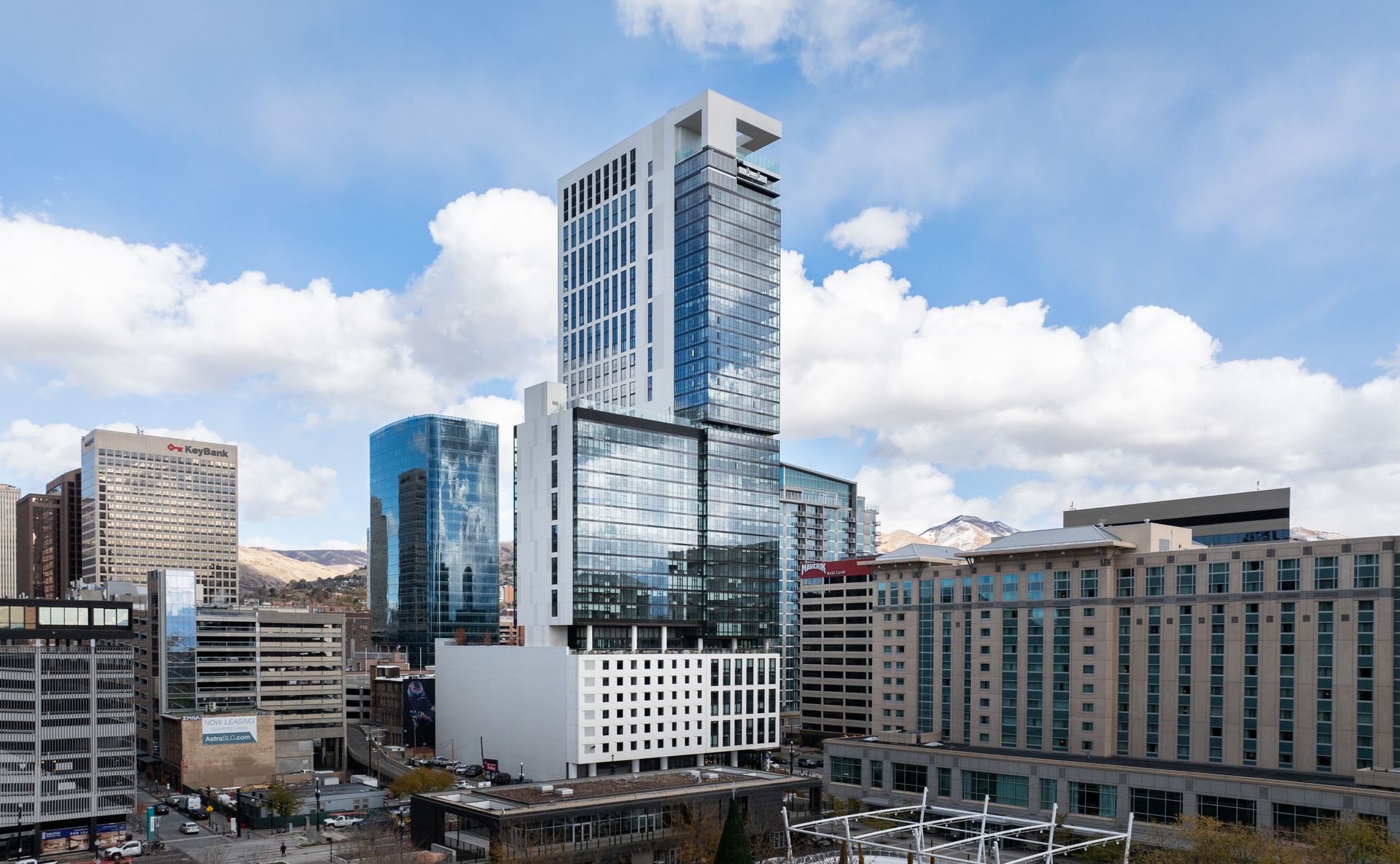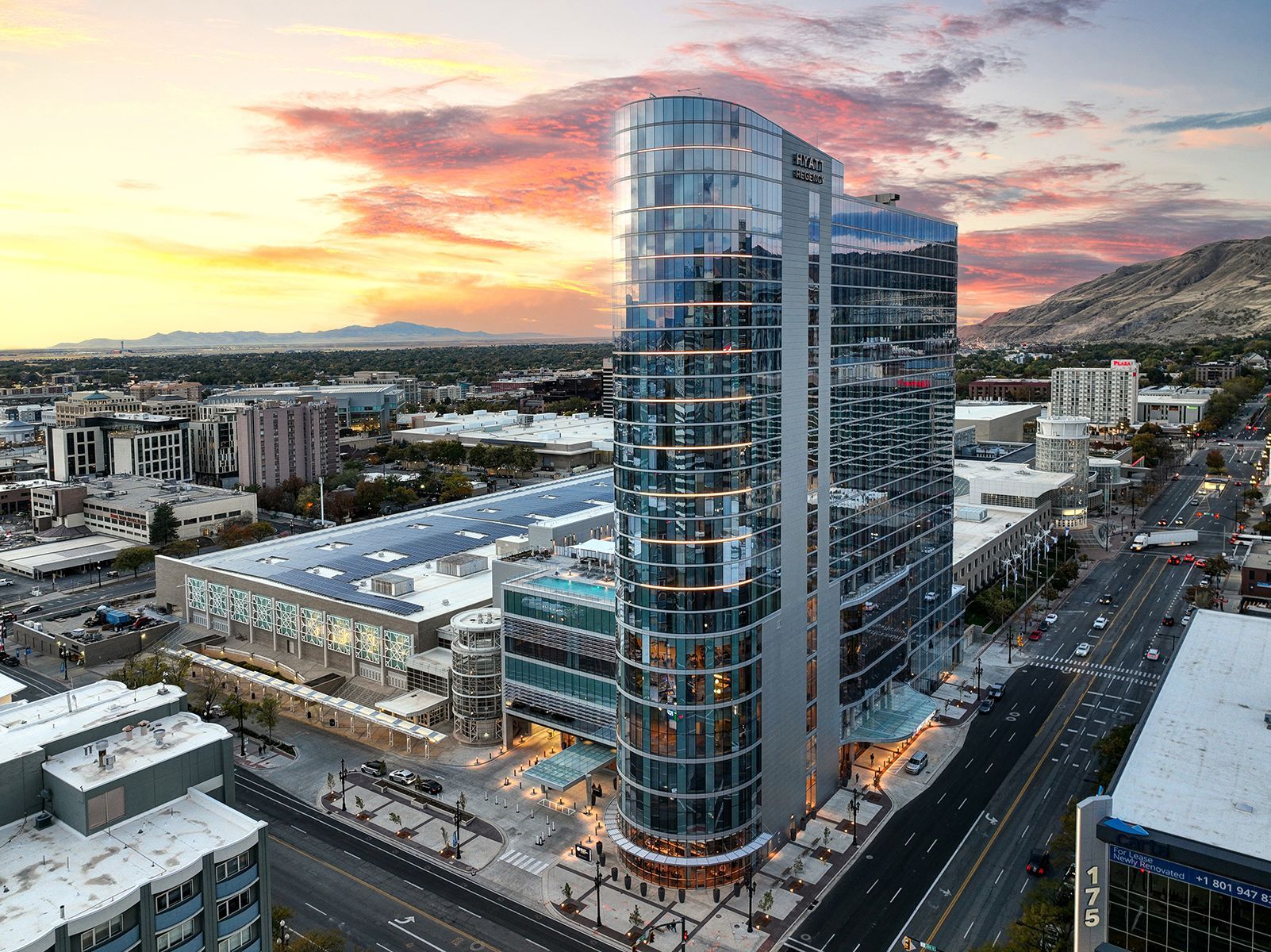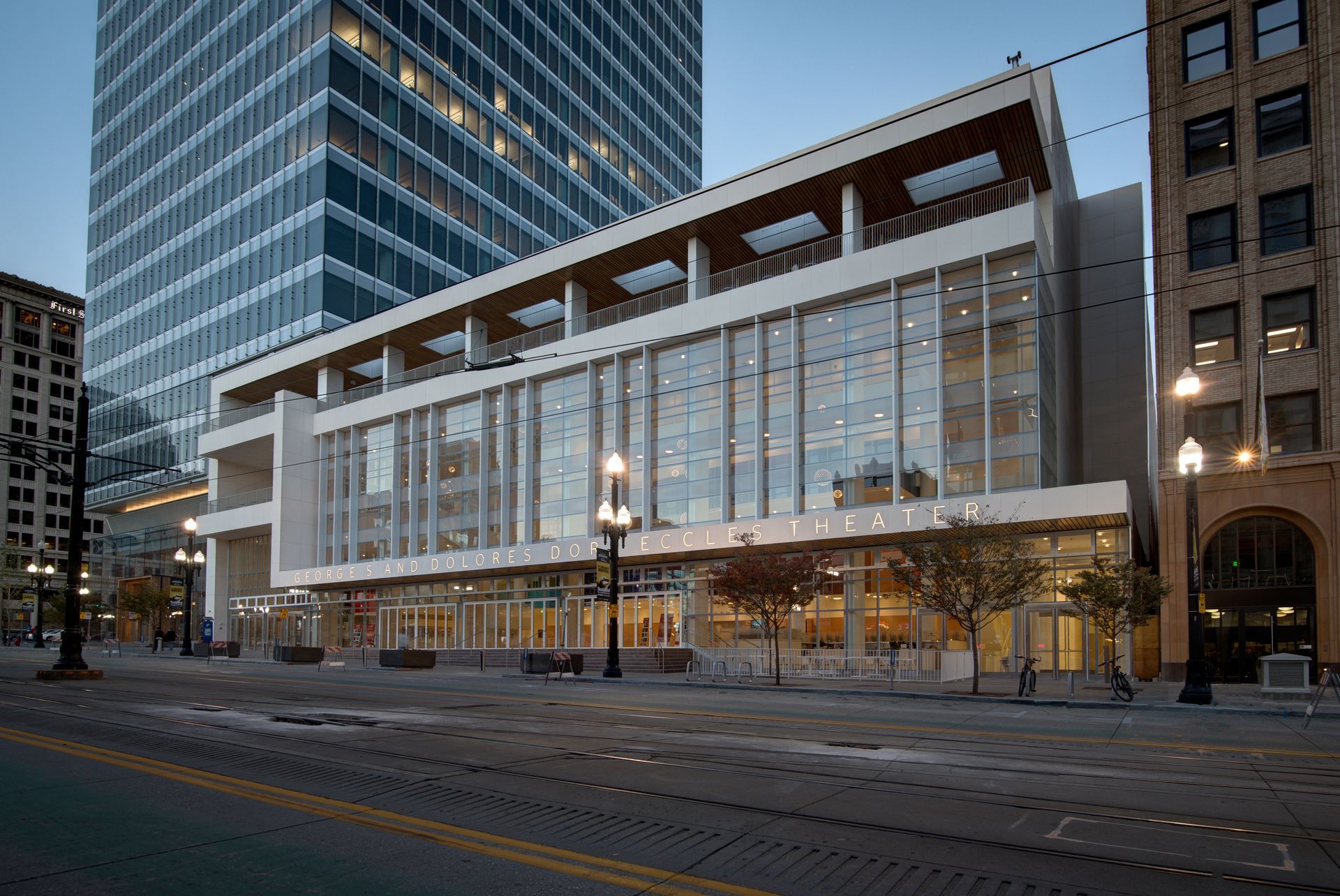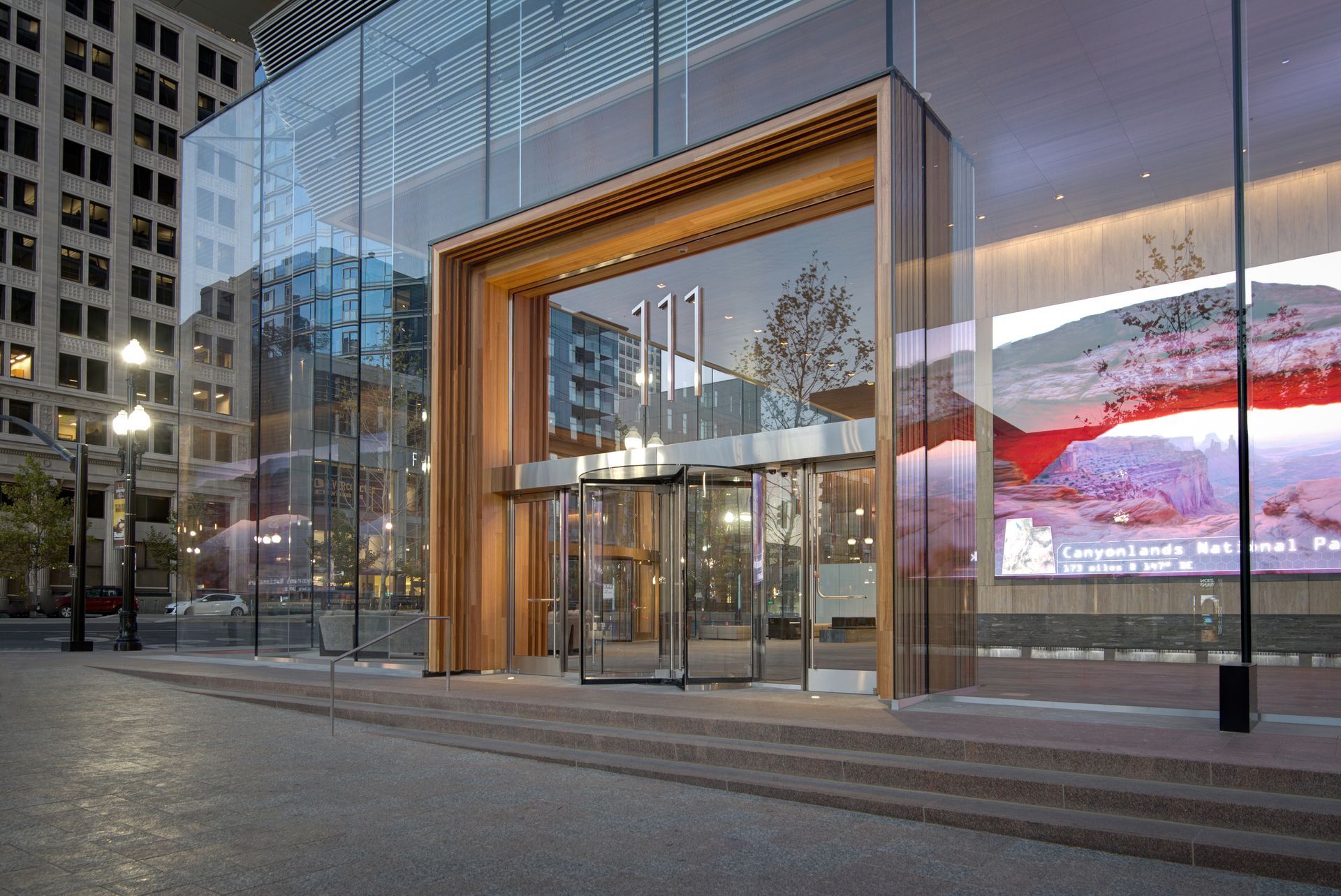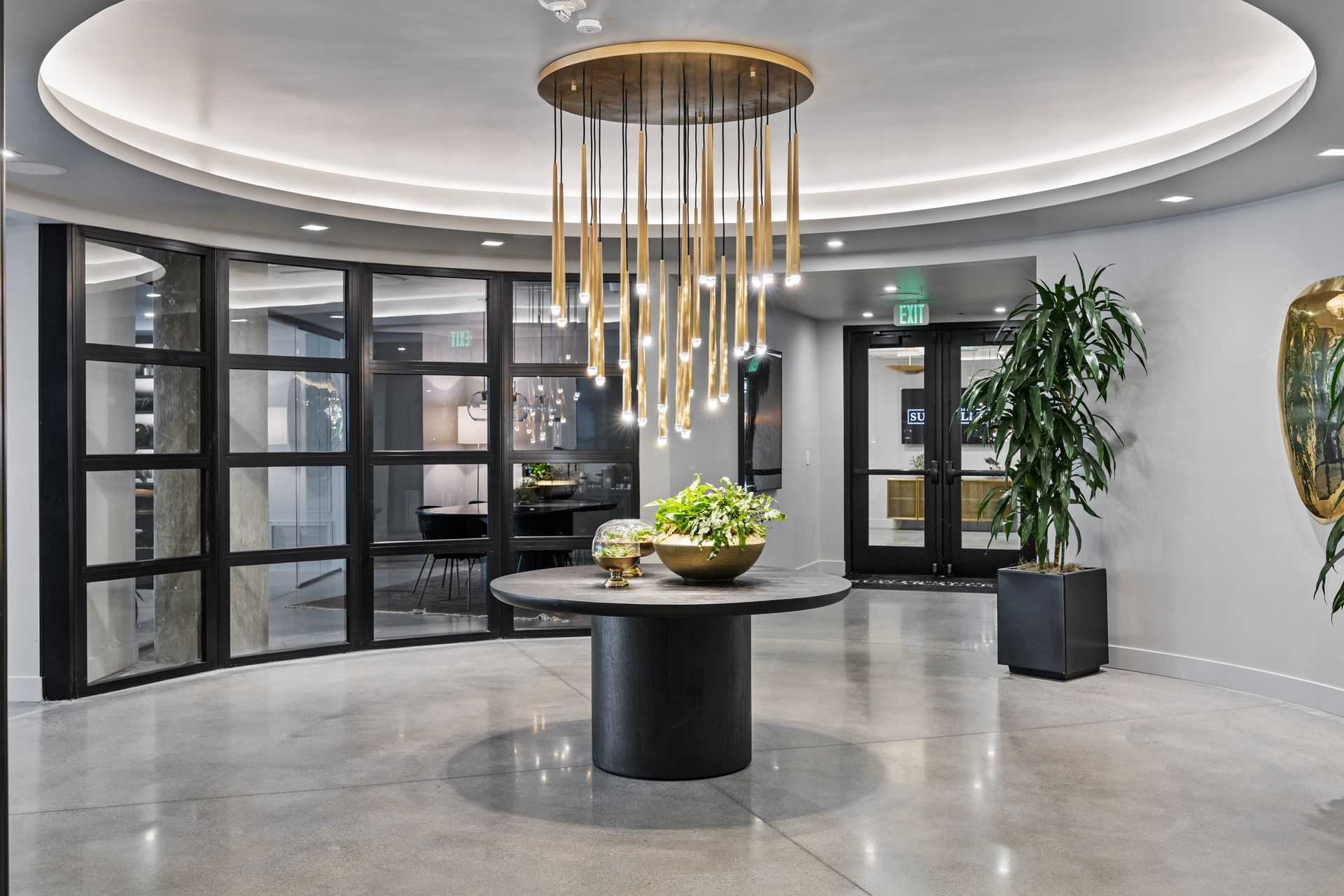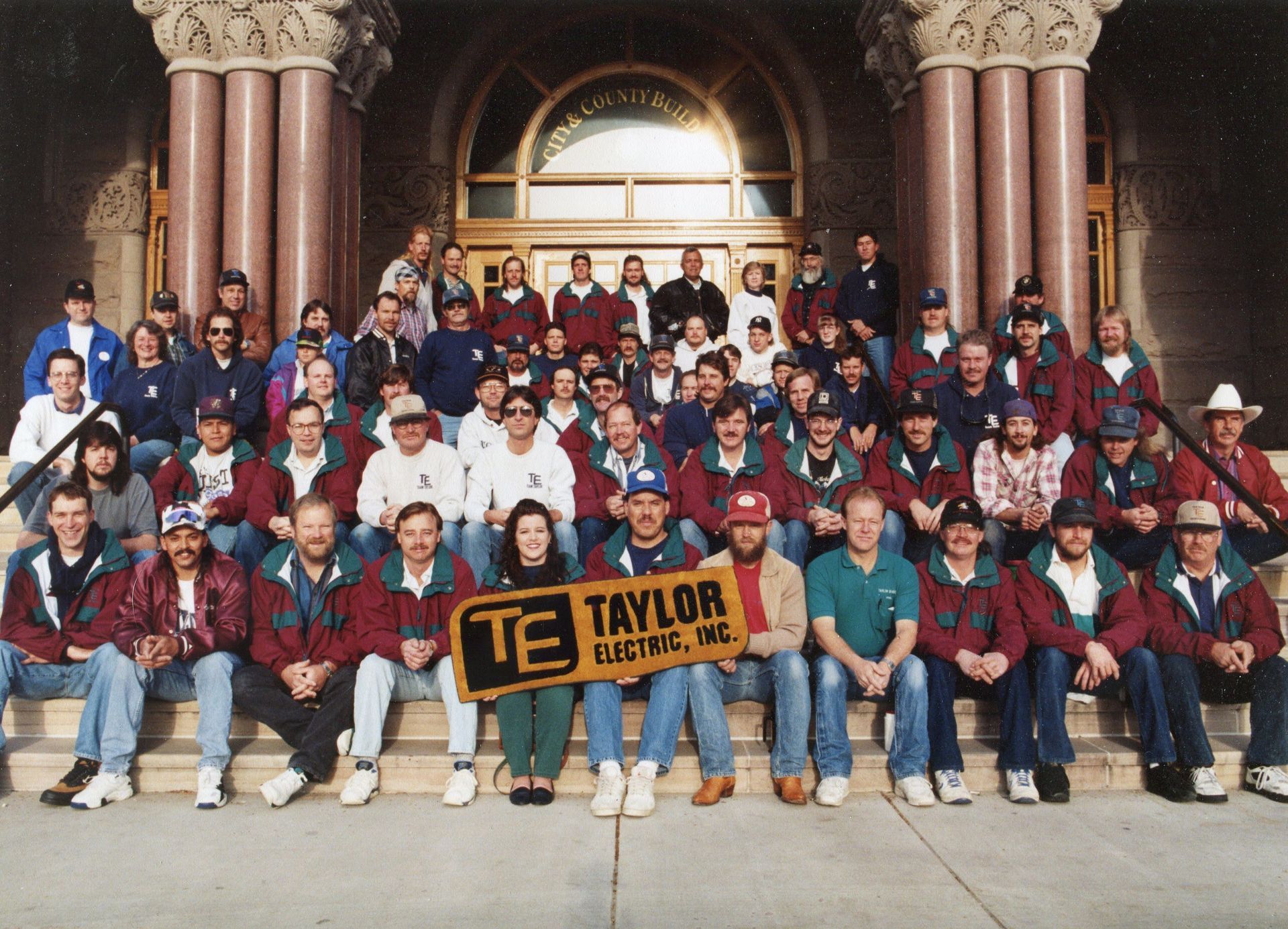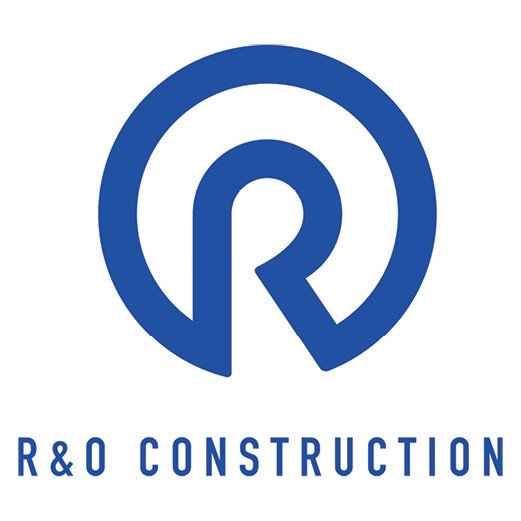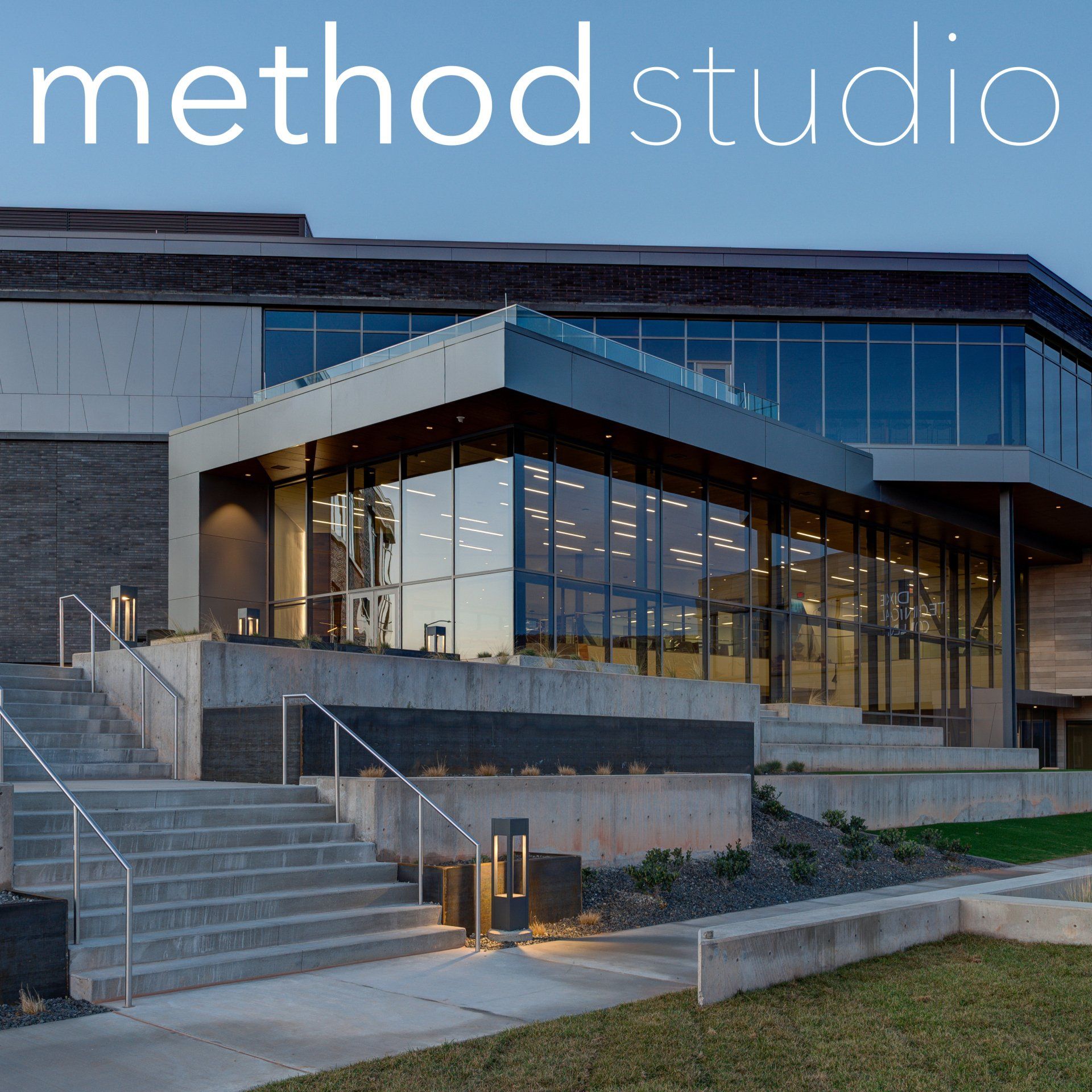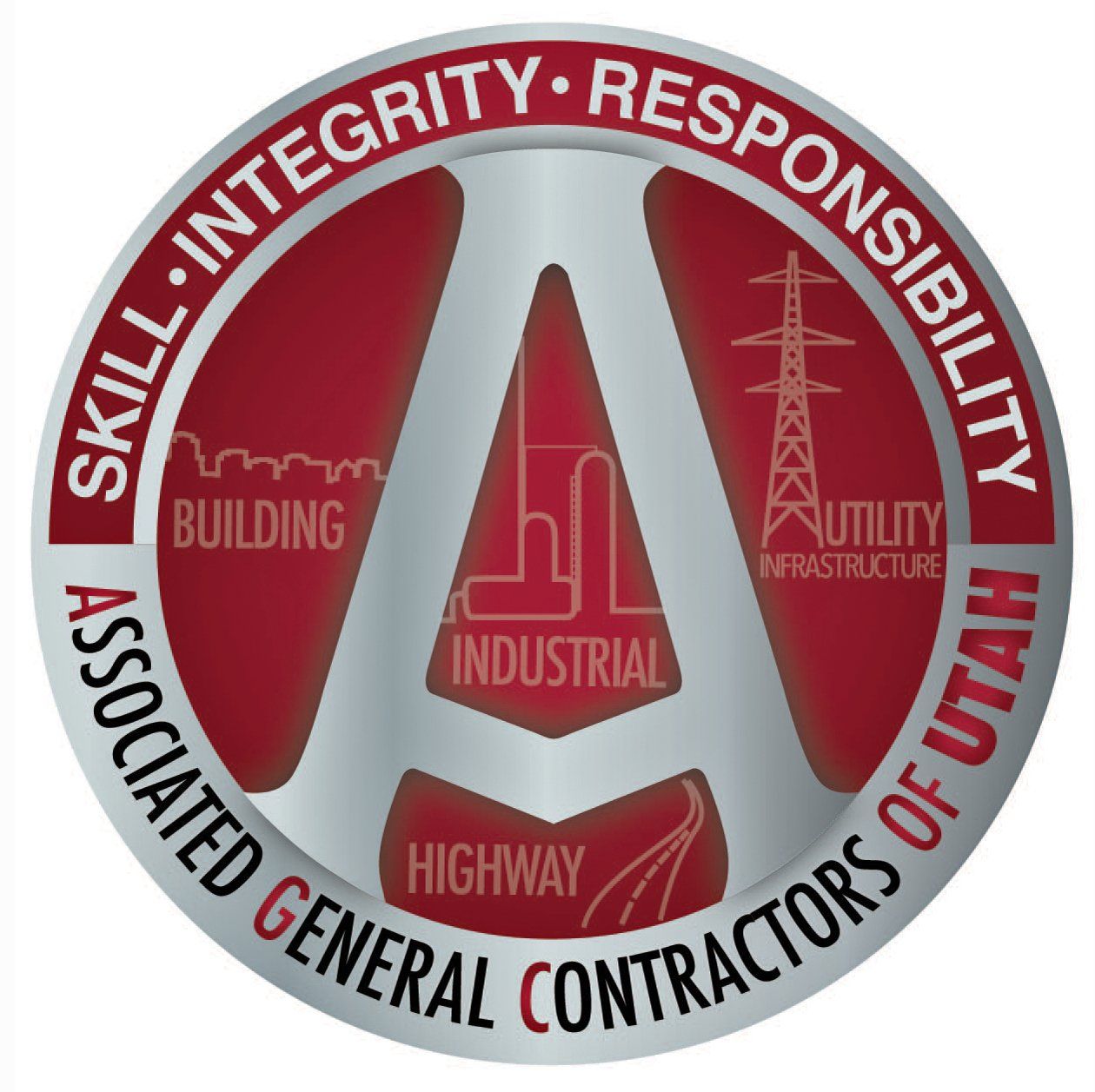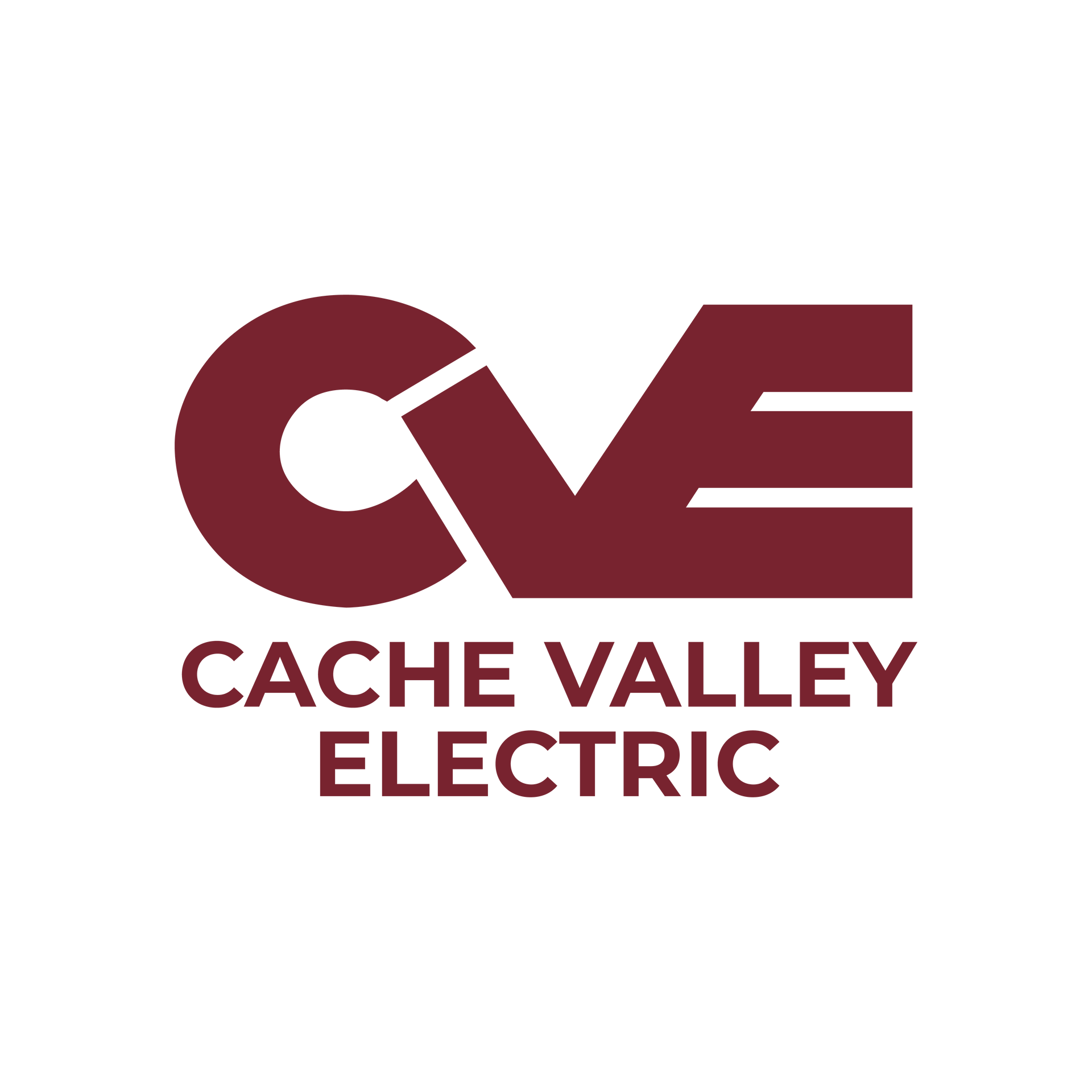Founded in 1985, Steel Encounters has excelled in fabricating and installing stunning glass curtain wall systems on prominent high-rise buildings in downtown Salt Lake. By Brad Fullmer
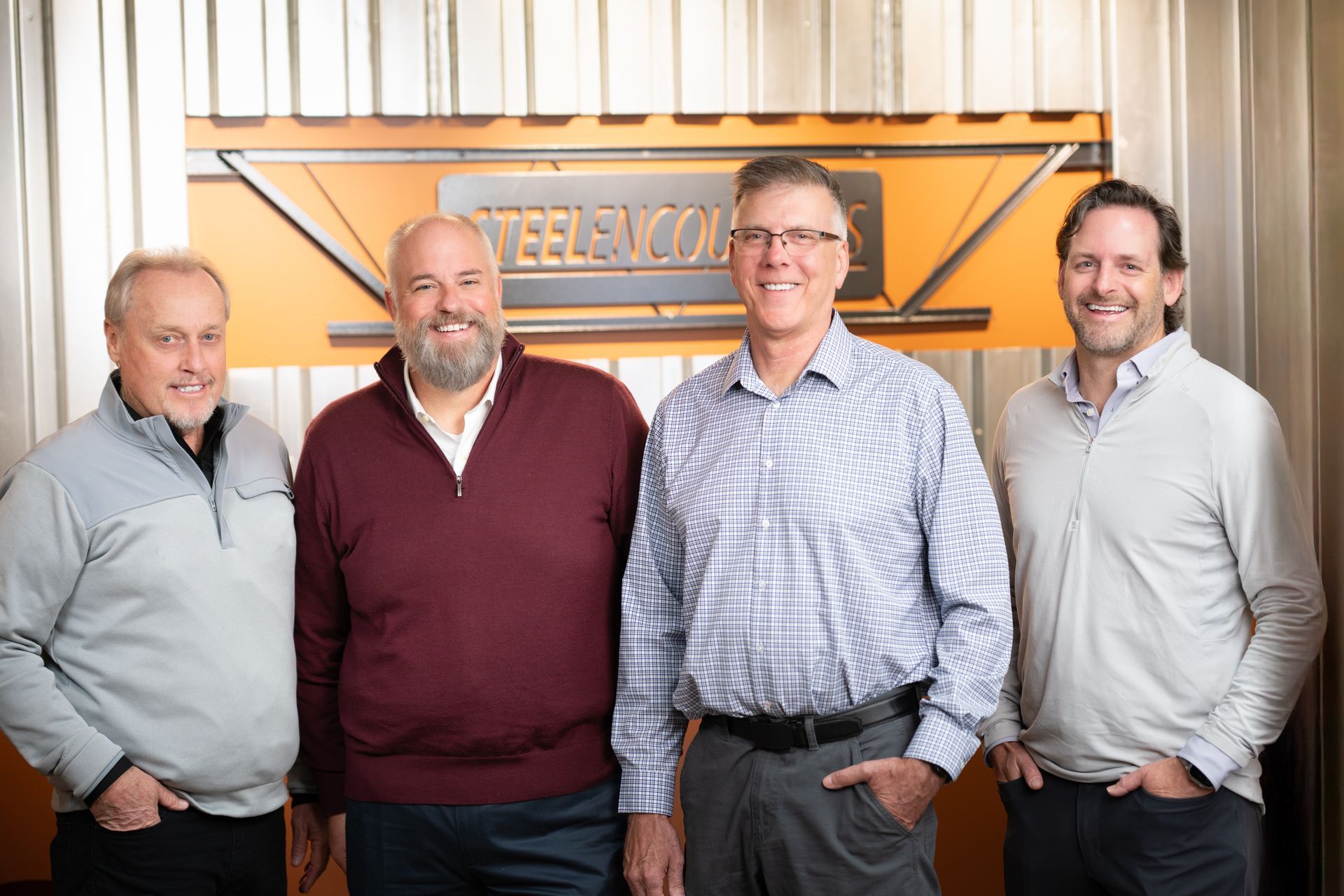
Asked what makes Steel Encounters, Inc. (SE) special as the company marks its 40th anniversary this year, Chairman/CEO Tom Jackson recalled a story from the fall of 2016 that illustrates the firm's commitment to fulfilling client expectations.
The project required the installation of exquisite bronze entrance doors on the Main Street side of the Little America Hotel in Salt Lake City. The client wanted the doors installed in time for Thanksgiving.
Manufactured by Jamestown, N.Y.-based Dawson, the high-end custom doors were highly labor intensive, requiring a five-month lead time. By early October, it seemed unlikely the doors would be finished in time. Jackson had worked with Dawson on previous projects and had a solid relationship with them, so he flew to New York to see if he could expedite the manufacturing process.
Jackson requested to speak to the union craftsmen, praising them for their skill and expertise on past jobs, and then explaining his dilemma of having a client really wanting the doors installed in time for Thanksgiving. He left the meeting and flew home thinking the trip was a failure and that the doors likely would not be delivered in time. On Nov. 1, Jackson astonishingly got a call from Dawson's GM saying the doors were ready to be shipped.
"The GM told me, 'Whatever you told them, they were highly motivated to help your customer and did everything it took to finish the work.’ The doors were installed by Thanksgiving," said Jackson. "This is the beauty of good relationships. Just a little bit of acknowledgment to these guys, and they knocked out the work. I could share many stories of our employees and business partners, the general contractors, superintendents, project managers, and vendors partnering to resolve problems and deliver a favorable outcome. It is important to care about each other’s mutual success to get the job done."
As Steel Encounters celebrates 40 years and hundreds of successful projects, it's operating like a well-oiled machine, firing on all cylinders, and achieving success at record levels on an array of impressive projects while completing $3.4 billion in contracts since its inception, including $1.2 billion from 2020-24.
"We're blessed to have longevity and 40 years of profitability," said Jackson, a 29-year company veteran, about the four-decade milestone. "There were some lean years, but Steel Encounters has generated a yearly profit. We don't take it for granted."
Roots Grounded in Hard Work, Willingness to Innovate Leads to Expertise in High-Rise Projects
Now in its fourth iteration of leadership, Steel Encounters boasts 250 employees at locations in in five states, including its Salt Lake headquarters, along with offices in Seattle (Architectural and Structural Divisions), Portland (Structural Division), Boise, Idaho (Architectural and Structural Divisions), and Jacksonville, Ark. (Structural Division).
The company was founded in October 1985 by Dennis Peterson and Billy Moore, with Fred Tannenbaum joining a year later to create a formidable trio. Peterson and Moore had worked together a few years at Salt Lake-based Associated Specialties (a construction products supplier) , which by the mid-80s was tanking, leading the pair to start Steel Encounters.
Despite a rough economic market in construction, they were bullish on their chances of success.
"We were advised not to go into business at that time, but we knew what we were doing," said Peterson, 78, a southside Chicago-native who moved to Utah in 1977 to ski and escape the big city. "We were a great team. I was on the design side (he earned a Bachelor of Structural Engineering from the University of Dayton), Billy provided detailing services, Fred did sales and accounting—it was a good combination. We offered design-build information and worked with engineers to make jobs more efficient by offering more economical alternatives."
The company was initially just a materials supplier, primarily open web steel joist and metal decking products. Within three years Associated had folded, and Steel Encounters picked up some key people, prompting it to diversify into architectural products including glass/glazing and building exteriors.
"We gradually acquired the right people and developed the architectural side," said Peterson. Ira Field, a structural engineer and friend of Tannenbaum, was hired in 1988 to spearhead the Architectural Division. Field "took the division a long way. We were getting into some heavy architectural products that required specific engineering, and he was the perfect guy for it."
The second wave of leadership included Peterson, Field, and Bob Dern, overseeing significant company growth through the 90s. Jackson came on board in 1996, having cut his teeth in the industry as a union glazing contractor in Seattle in 1982, traveling to 11 states over six years. He met his wife, Susie, and they ultimately settled in Utah with Jackson working for a competitor a few years before being recruited as a Project Manager by Field.
Field skillfully guided the firm into the high-rise market, initially landing Salt Lake-based projects the Gateway Tower in 1997, Grand America Hotel in 2000, and 222 Main in 2006.
Jackson quickly proved his mettle managing high-profile jobs including Gateway Tower, Rice-Eccles Stadium Expansion at the University of Utah, and the Juan Diego Catholic School Campus in Draper.
The company grew consistently during the 2000s, even weathering the great recession from 2008-2010 in part by landing significant work on the $2 billion City Creek Center in Salt Lake and the giant NSA Data Center in Bluffdale.
"Our success, I can flatly say, is because we hired the right people," said Peterson. "Without the right people, the company wouldn't be where it is now. We had a great team; they still have a great team."
Jackson said the firm's attention to detail includes direct communication with all team members, beginning with manufacturers. He served as Construction Manager in 2008 when 222 Main started and insisted on a detailed QA/QC plan from each manufacturer while meeting with personnel directly to ensure the highest quality product.
"It's so important to know the people making these products for us," he said.
Since then, Steel Encounters has thrived in the high-rise glass curtain wall market, with an enviable 25+ year run of skyline-busting projects. The list includes Utah Valley Medical Center, 95 South Temple, City Creek Condos, the Regent, 111 Main, 95 State, Liberty Sky Apartments, Hyatt Regency Hotel, the Worthington, and the 40-story Astra Tower—the tallest building in Utah at a whopping 450 ft.
"It's a highlight to see the city skyline develop—we've been a big part of that change," said Brad Hardy, a 20-year veteran at Steel Encounters named President/COO in January, having formerly been Executive Vice President of the Structural Division.
A list of standout past projects beyond skyscrapers includes Intermountain Medical Center in Murray (one of 15 Intermountain Healthcare projects since 2000), Huntsman Cancer Institute in Salt Lake, Adobe Corporate Campus in Lehi, George S. and Dolores Doré Eccles Theater in Salt Lake, the Salt Lake City Airport Redevelopment, and Mountain America Credit Union HQ in Sandy. Current projects include the North Capitol Building in Salt Lake and the new Salt Lake Bee's Stadium in South Jordan.
"As I look at our projects, every job brings a flood of memories—the challenges, the difficulties," said Jackson. "Our goal is to make the difficult look easy." Projects like the high-rises and City Creek Center pay dividends in helping attract the best and brightest in the exterior facade industry.
"When recruiting, I take people through City Creek, a highly engineered, sophisticated project with glass, motorized doors, the bridge, the cable inlet walls. It helps them see our impact. It's fun for me," said Jackson.
Steel Encounters has excelled in the fabrication and installation of all-glass curtain wall exterior systems in the past 15 years, including 95 State in Salt lake City and the Nu Skin Innovation Center in Provo. Crews utilize specialized equipment with huge suction cups to lift huge pieces into place. (All photos courtesy Steel Encounters, except where indicated)
Multiple Divisions, Fabrication Shop Spur Diversity, Broad Market Reach
Steel Encounters added offices in Seattle (in 2004) and Boise (in 2024) to extend the reach of the Architectural and Structural Divisions. The Special Projects department was added in 2015. Each division has an array of in-house engineering, fabrication, logistics, quality assurance, safety, and project management specialists.
The Architectural Division creates beautiful building envelopes, including dazzling glass curtain walls, durable cladding systems, storefronts, and operable glass partitions, among other exterior finishes.
The Structural Division provides steel joist and deck materials throughout the U.S. and has a reputation for helping clients streamline projects. With an average of more than 600 commercial construction projects completed annually, it is well-versed in efficiently delivering the highest-quality products and services.
The Special Projects team focuses on unique specialty projects, including luxury residential homes, houses of worship, temples, tenant improvements, and post-construction services and maintenance. In addition, Steel Encounters' fabrication shop has been a major success since it opened at the end of 2014, with employees immediately showing off their chops by fabricating the curtain wall system for 111 Main in downtown Salt Lake.
Leadership Transition;ESOP Aims to Optimize Employee Wealth
Peterson retired in 2015, and Field followed in 2019, leading to Steel Encounters' third generation of leadership, including Jackson, Pam Foote, Peter Hatton, Derek Losee, Shauna Christofferson, and Dan Tibbitts. Each contributed mightily to the firm's progress from 2020-2024.
Last year, Hardy was installed as President/COO, while Jackson retained the role of Chairman/CEO. In addition, Michael Rudge was named CFO in 2020, and Brian Tlustosch became Executive VP of the Structural Division this year.
Steel Encounters began its ESOP (Employee Stock Ownership Plan) journey in 2015 and became 100% employee-owned in 2023. Jackson is particularly excited about this program, as it gives each of SE's 250 employees more "skin in the game" and an opportunity to accumulate greater wealth and prosperity during their careers. It also benefits the firm via increased loyalty and employee incentives to maximize quality and productivity.
"[ESOP] helps us generate employee wealth," said Jackson. "As you can tell, I'm excited about our people. Our employees work hard because they love the company they own."
Jackson sets the standard for establishing a forward-thinking culture with positive encouragement and praise when a job is done well. The firm emphasizes employee growth and happiness and rolls out the red carpet for new hires with their name on the door, a swag bag, a laptop, and business cards ready to go on day one.
"What that all says to a new hire is, 'We've been expecting you, and we're looking forward to working with you', "said Jackson.
"I love visiting the fabrication facility and seeing our craftworkers. The sounds of the shop and visiting with the employees make me happy," said Jackson. “My other happy place is at the job sites—the field and shop guys are my jam. My early career as a glazier created a bond between us. I am proud of them. It's going to be hard for me to retire."
"I've never worked with anybody that is so engaged with not just the success, but making sure people are safe—that's what makes Tom a good leader," said Hardy. "Tom has a CEO mindset—he's always looking at the big picture on how to make Steel Encounters, our employees, and our customers successful."
Hardy also echoed the company's focus on employees and a culture that fosters loyalty, hard work, and a genuine appreciation for co-workers.
"It's more than just a job—you spend so much time together, it's like a work family," he added. "You can't do that without a culture that makes people want to come to work."
Steel Encounters Significant Projects
Year Project Location
1997 The Gateway Tower Salt Lake City
1998 Rice-Eccles Stadium University of Utah
2000 Larry H. Miller Corp. HQ Sandy
2007 Intermountain Med. Center Murray
2009 222 Main Salt Lake City
2012 Adobe Corporate Campus Lehi
2015 111 Main Salt Lake City
2023 95 South State Salt Lake City
2023 Hyatt Regency Hotel Salt Lake City
2024 The Worthington Salt Lake City
2024 Astra Tower Salt Lake City
2025 Salt Lake Bees Stadium South Jordan
